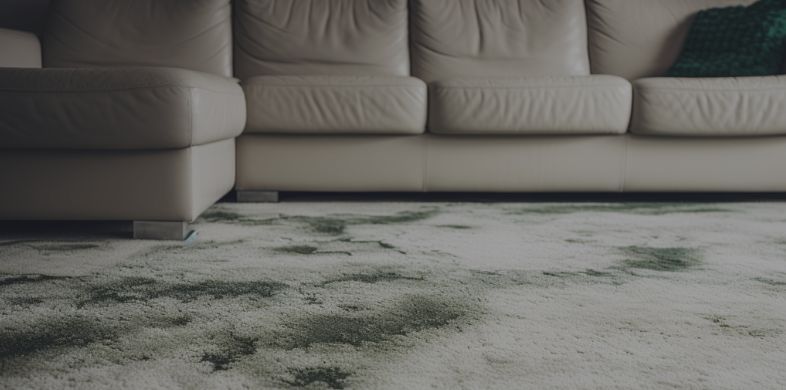
How to Get Rid of Mold in Your Carpets?
TL;DR: To get rid of mold in your carpets, identify and remove the source of moisture, use DIY solutions like vinegar or baking soda for small areas, or seek professional cleaning for extensive mold. Regularly clean and maintain your carpets, and control indoor humidity to prevent future mold growth.
If you have mold in your carpet, it requires immediate action to protect the health and safety of your family. Mold not only ruins the aesthetic of your carpets but can also pose significant health risks, especially to those with allergies or respiratory conditions. Understanding the urgency of this problem, our blog aims to arm you with the necessary knowledge and tools to identify, prevent, and effectively remove mold from your carpets.
In this comprehensive guide, we will delve into what causes mold to thrive in carpets and how you can spot the early signs of mold infestation. We’ll also explore a range of solutions, from simple DIY remedies to professional mold removal services and carpet cleaning services, ensuring you have all the information needed to make the best decision for your home.
Does Your Carpet Have Mold?
Mold is a type of fungus that thrives in moist, warm environments, and unfortunately, carpets can provide the perfect place for it to grow and flourish. Mold spores are always present in the air, but they only start to grow and become visible when they find the right conditions – typically areas with excessive moisture and organic material to feed on.
Mold growth in carpets is not just a cosmetic issue; it can cause structural damage to the flooring and, more importantly, poses health risks. Exposure to mold can lead to a variety of health problems, particularly respiratory issues, allergic reactions, and in severe cases, more serious health conditions. Thus, identifying and addressing mold growth promptly is essential for maintaining a healthy living environment.
Mold growth in carpets is primarily driven by moisture, as damp environments provide the ideal conditions for mold spores to thrive. This moisture can originate from spills, leaks, or high humidity. Additionally, the warmth of indoor settings, organic materials trapped in carpets (like dust and food particles), and poor ventilation contribute to mold proliferation. Mold can start growing within 24-48 hours in the right conditions and prefers dark, undisturbed areas.
Identifying Mold In Carpets
Identifying mold in carpets can be tricky, as it often starts below the surface where it’s not immediately visible. However, there are several telltale signs that can alert you to the presence of mold. The most obvious indicator is visual: look for patches of black, green, or white growth, which are common colors of mold. These can often be mistaken for regular stains, but mold has a fuzzy or slimy texture.
Another strong indicator is the smell; mold gives off a distinct musty, earthy odor, similar to the scent of damp clothes left in a washer. It’s important to investigate any unusual odors in your home, as mold can grow extensively before it becomes visible. The presence of mold in carpets can also impact your health, especially if you are allergic or sensitive to mold spores. Symptoms like sneezing, coughing, or itchy eyes when in the room may suggest a mold issue.
DIY Tips For Getting Mold Out Of Your Carpets
Once you have diagnosed your carpet with mold, it is essential you act immediately. Be sure to keep the area cut off from the rest of your home. Mold can quickly and easily spread, turning a small issue into a significant project
When dealing with a minor mold problem in your carpets, there are several effective DIY solutions you can use. Before you start, ensure the room is well-ventilated, wear protective gloves, and consider a mask to avoid inhaling spores. Begin by lightly brushing the affected area to loosen the mold. Then, you can apply one of the following solutions:
- White Vinegar: Mix equal parts of water and white vinegar in a spray bottle. Spray the solution onto the moldy area, let it sit for an hour, and then gently scrub with a brush. Vinegar is a mild acid that can kill most types of mold.
- Baking Soda: Combine water and baking soda to create a paste. Apply this paste to the mold, leave it to dry, and then vacuum up the residue. Baking soda is great for absorbing moisture and neutralizing odors.
- Hydrogen Peroxide: Apply 3% hydrogen peroxide directly to the mold, let it sit for 10-15 minutes, and then scrub the area. This solution is effective for killing mold and brightening the carpet.
After treating the area, make sure to thoroughly dry the carpet to prevent mold from returning. Here are some steps to follow:
- Dry the Area: Use fans or a dehumidifier to dry the treated area completely.
- Vacuum: Once dry, thoroughly vacuum the area to remove any spores or residue.
- Repeat if Necessary: For stubborn mold, you may need to repeat the treatment.
Remember, these DIY solutions are suitable for small areas of mold. For larger infestations or if you have health concerns, you’ll need to hire a professional.
The Importance Of Professional Mold Removal And Carpet Cleaning
When dealing with extensive or deep-set mold in carpets, hiring professional mold removal and carpet cleaning services becomes essential. Professionals are equipped with specialized tools and knowledge that enable them to tackle mold more effectively than typical DIY methods. They can identify the full extent of the mold infestation, including any growth that’s hidden beneath the carpet surface or in the padding, ensuring that the entire problem is addressed. Mold spores can be harmful when inhaled, and professionals know how to safely remove mold without spreading these spores throughout your home.
Here are key reasons why hiring professionals is important:
- Expert Assessment: Professionals can accurately assess the extent of mold damage and suggest the best course of action.
Advanced Equipment: They use industrial-grade dehumidifiers, air movers, and cleaning solutions that are more effective than household products. - Deep Cleaning: Professional carpet cleaners can thoroughly clean and disinfect carpets, removing mold spores and preventing future growth.
- Safety: Mold removal can be hazardous. Professionals are trained in safety protocols to handle mold without risking your health.
- Time and Efficiency: Professional mold removal is generally quicker and more efficient, minimizing the time your space is affected.
- Guaranteed Results: Many professional services offer guarantees, providing reassurance that the mold issue is completely resolved.
While small patches of mold might be manageable with home remedies, for larger infestations, safety concerns, or to ensure complete eradication, professional mold removal and carpet cleaning services are highly recommended. They not only address the immediate issue of mold but also help in maintaining a healthy, clean, and safe living environment.
How To Prevent Mold In Carpets
Preventing mold growth in carpets is crucial for maintaining a healthy indoor environment and preserving the life of your carpets. The key to mold prevention lies in controlling the environmental factors that encourage mold growth, particularly moisture and humidity.
Regularly use a dehumidifier in areas prone to higher humidity to help keep moisture levels from reaching a point where mold spores need to grow. Additionally, vacuum your carpets frequently to remove dust and organic matter that mold can feed on. Good ventilation is another crucial factor; ensure that your home, particularly carpeted areas, is well-ventilated, with air circulating freely to prevent moisture buildup.
In addition to these general practices, there are specific steps you can take to further safeguard your carpets against mold. Placing rugs or mats in high-traffic areas can help absorb excess moisture and dirt, reducing the likelihood of mold growth in the underlying carpet. If possible, avoid installing carpets in areas prone to moisture, such as bathrooms or kitchens. For existing carpets in these areas, consider using carpet tiles, which can be easily removed and cleaned or replaced if they become wet.
Regular professional cleaning can also play a significant role in mold prevention, as it removes deeply embedded dirt and moisture that regular vacuuming may miss. By implementing these preventive measures, you can significantly reduce the likelihood of mold taking hold in your carpets, ensuring they remain clean, healthy, and visually appealing for years to come.
Professional Carpet Cleaning And Mold Removal Near You
Removing mold from your carpet flooring is crucial, not just for aesthetic reasons, but more importantly, for the health and safety of your family. Timely and effective removal of mold is essential to maintain a clean, safe, and healthy living space, ensuring the longevity of your carpet and the health of everyone in your home.
If you’re faced with mold damage in your home, Steamy Concepts is the professional Carpet Cleaning and Mold Removal experts you can count on. With years of experience in handling mold issues in the unique Arizona climate, Steamy Concepts utilizes state-of-the-art equipment and advanced techniques to effectively eradicate mold from carpets, ensuring a thorough cleanse that goes beyond surface treatment.
Frequently Asked Questions About Mold Removal And Carpet Cleaning
How can I tell if my carpet has mold?
Signs of mold in carpets include a musty smell, discoloration, and visible mold growth. Allergies or respiratory issues can also be indicators of mold presence.
How can I prevent mold from growing in my carpets?
Regular vacuuming, immediately addressing spills, maintaining low humidity, and ensuring good ventilation are key steps to prevent mold growth in carpets.
When should I call a professional for mold removal?
If the affected area is large, the mold keeps returning, or if you have health concerns like allergies or asthma, it’s best to consult a professional for mold removal.
Table of Contents
Other Blogs You May Be Interested In

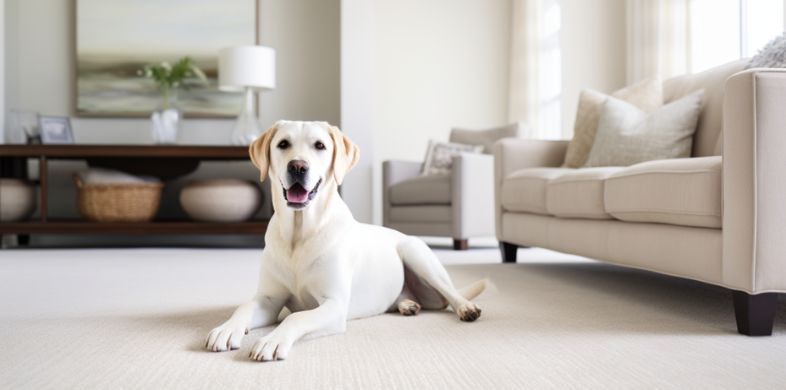

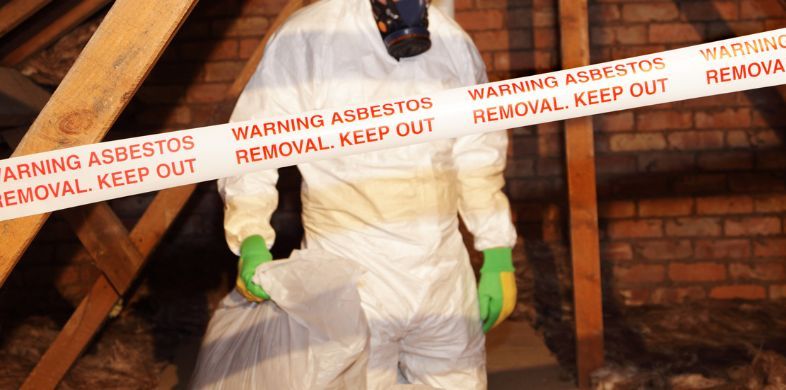


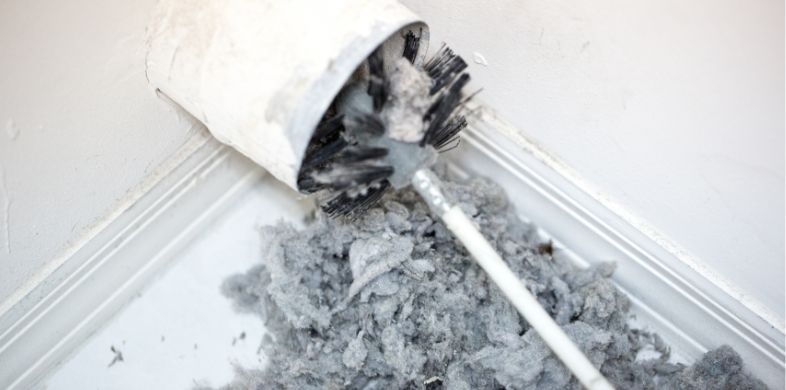




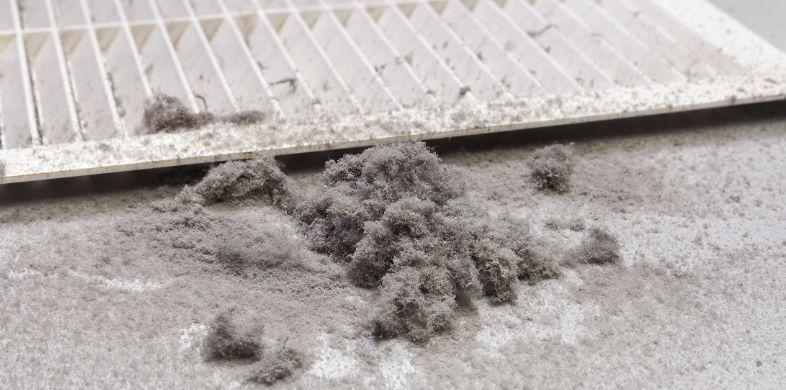

Leave a Reply